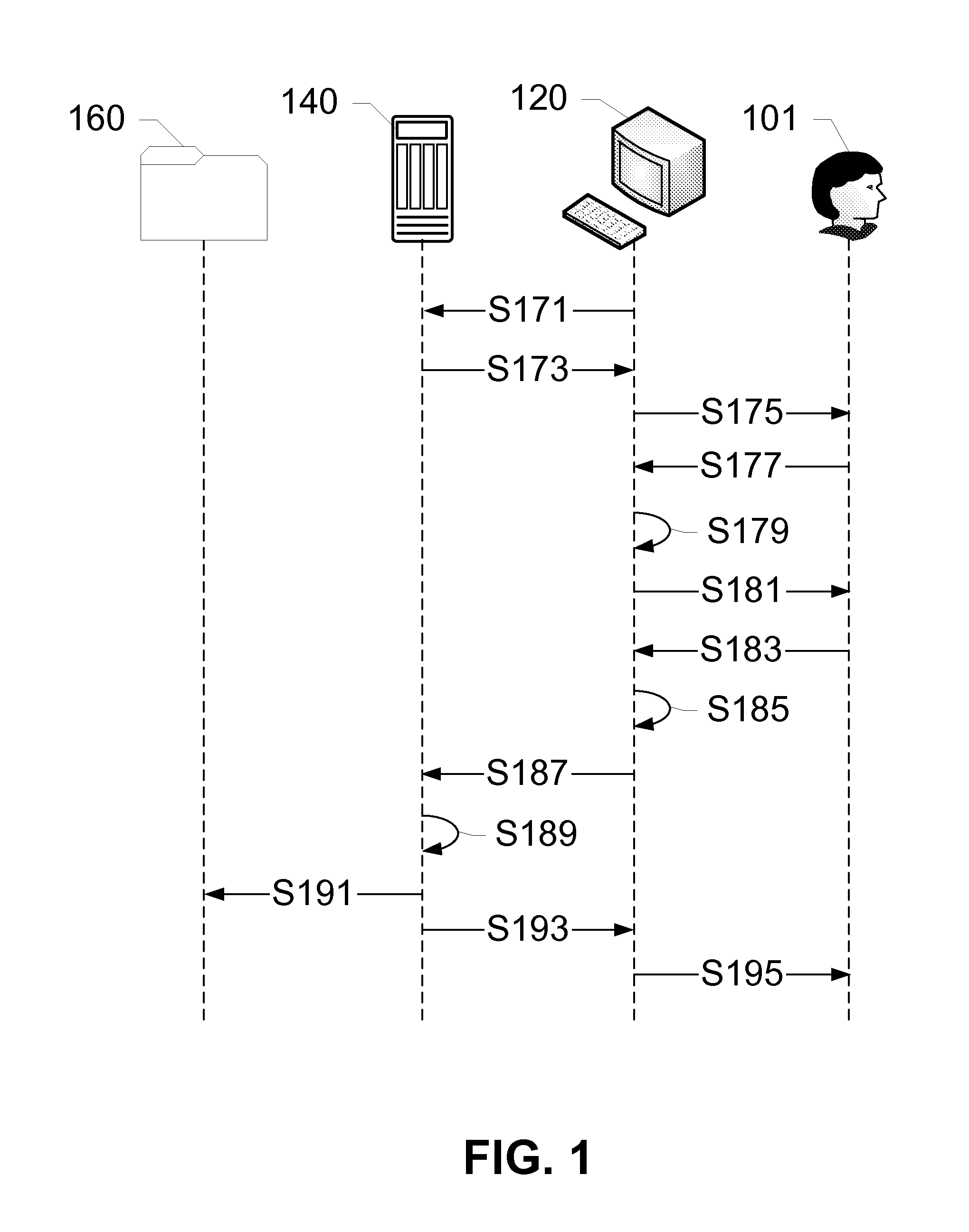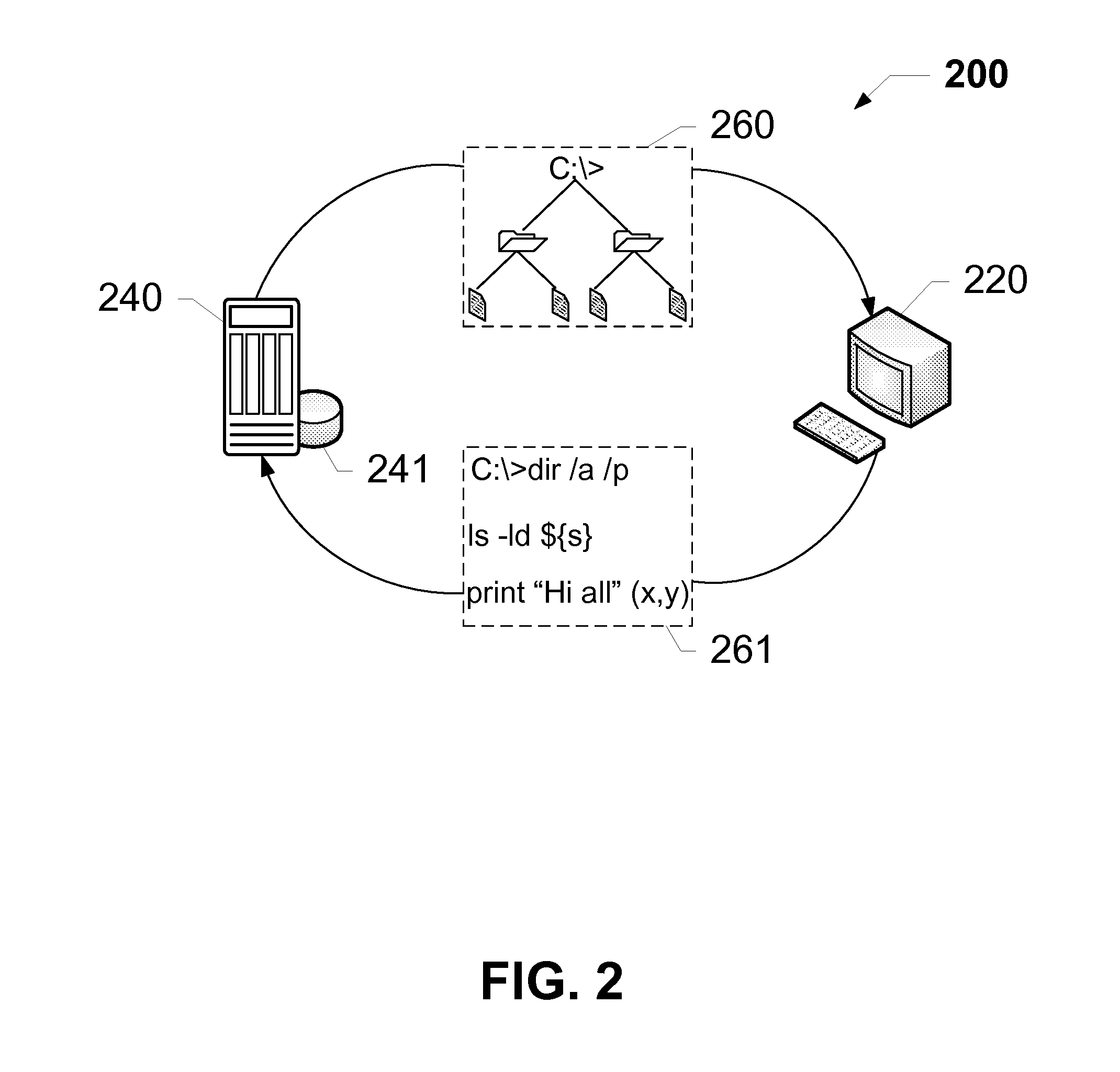Extending Legacy Scripting Languages with Graphical References
a scripting language and graphical reference technology, applied in the field of computer programming, can solve the problems of large amount of code, and difficulty in implementing, and achieve the effect of efficient operation
- Summary
- Abstract
- Description
- Claims
- Application Information
AI Technical Summary
Benefits of technology
Problems solved by technology
Method used
Image
Examples
Embodiment Construction
[0020]The following detailed description presents a novel technique for extending legacy scripting languages with graphical references. The disclosure describes a graphical data type inference that transparently transforms a legacy text-oriented command line interface (CLI) into a graphic-oriented or graphic-aware CLI (G-CLI). Briefly, instead of entering a typical low-level command directly into a command line interface (CLI), a user fuses graphical references with the legacy scripting language by identifying objects using syntax familiar to the user. The objects are presented to the user via a user interface and are arranged in some manner, for instance, a tree. The user issues commands on the selected objects by referencing the graphical selection in a command line within a shell. The graphical selection in short hand is translated into a form operable by a server or computer. This may be performed by a translation unit embedded within the interface itself. The syntax of the lega...
PUM
 Login to View More
Login to View More Abstract
Description
Claims
Application Information
 Login to View More
Login to View More - R&D
- Intellectual Property
- Life Sciences
- Materials
- Tech Scout
- Unparalleled Data Quality
- Higher Quality Content
- 60% Fewer Hallucinations
Browse by: Latest US Patents, China's latest patents, Technical Efficacy Thesaurus, Application Domain, Technology Topic, Popular Technical Reports.
© 2025 PatSnap. All rights reserved.Legal|Privacy policy|Modern Slavery Act Transparency Statement|Sitemap|About US| Contact US: help@patsnap.com



